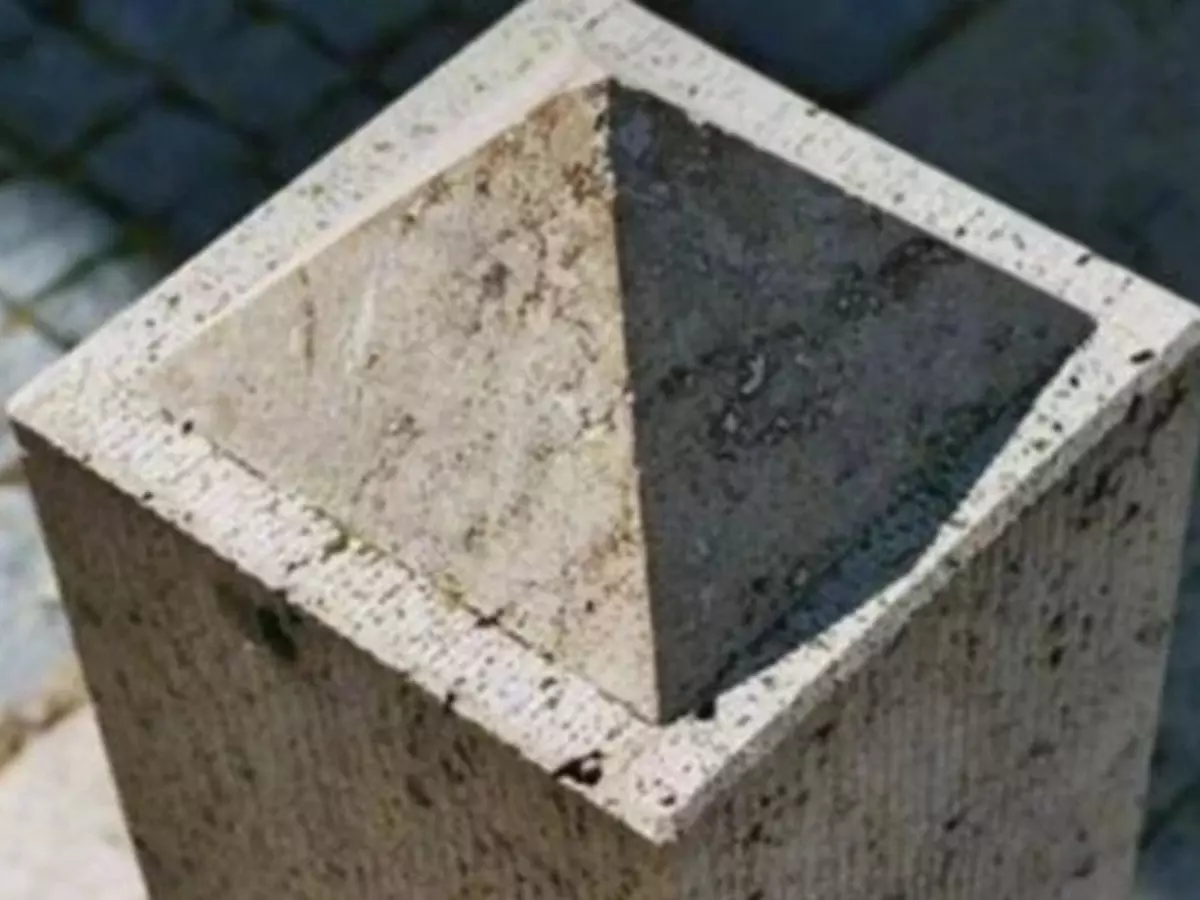Optical Illusion: Pyramid Or Hollow Pillar, What Do You See In This Baffling Picture?
A baffling image showing a pyramid or a hollow pillar has left the internet divided.

Given the ever-growing trend, our day wouldn't be complete without a mind-boggling optical illusion. And well, if you are craving more, we are here to help.
Optical Illusion: Pyramid or hollow pillar?
Sit down and buckle up, because this optical illusion will blow your mind. A baffling image showing a pyramid or a hollow pillar has left the internet divided.
 TikTok/@beatonthebeeb
TikTok/@beatonthebeeb
The image shows what appears to be concrete standing on a street.
But, if you look closely, a pyramid can also be seen on the top of the structure. However, some may be able to see only the pillar or the pyramid, while some can see both.
The mind-bending image was shared on TikTok by Dean Jackson, who invited users online to comment on what they saw first.
 TikTok/@beatonthebeeb
TikTok/@beatonthebeeb
Many people said they could see both the pillar and the pyramid.
"I can see both. The pyramid is more realistic, but the background shadow is wrong. The hollow image has a weird edge, it¡¯s uncanny," a user commented.
¡°I can flick between both, but I think it¡¯s the pyramid in the actual image," a user wrote.
¡°I see three ¨C pyramid, hollow and two-tone flat square. I can flip between all three," a third user said.
How do optical illusions work?
For centuries, people around the world have been fascinated with optical illusions. The notion that your eyes can trick you into seeing something that¡¯s not really there is mind-blowing.
It takes our eyes and brain about one-tenth of a second to see, transmit and process an image. Our brains use lots of tools to compile images so quickly. Noting surrounding contrast, defining borders, and even flat-out guessing what should be there to fill in any gaps. Usually, these shortcuts work great and serve us well! But every now and then, they fail us.
 Pinterest
Pinterest
Simply put, when you look at something, what you are really seeing is the light that bounced off of it and entered your eye. This converts the light into electrical impulses that your brain can turn into an image.
Think of it this way - your brain takes shortcuts, further simplifying what you see to help you concentrate on what is required. This helps compensate for your brain¡¯s tenth-of-a-second processing lag. This trait actually helped early humans survive encounters with fast predators.
While some optical illusions trick us into seeing motion, others trick our brains into perceiving colours or shades that are not visibly present.
For more trending stories, follow us on Telegram.
